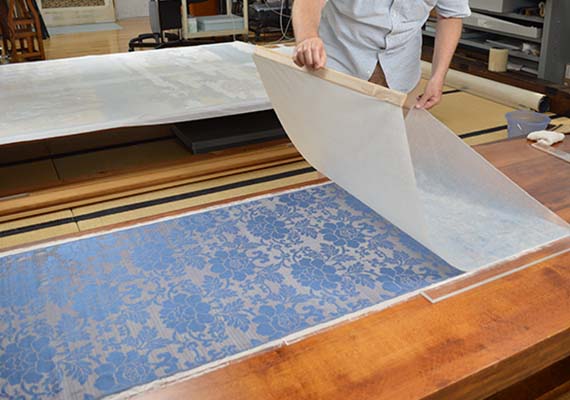With the scroll safely dismantled from its mounting, preparation of the new mounting silks begins. The Death of the Historical Buddha is a devotional Buddhist painting, and accordingly it is mounted in one of the most elaborate mounting styles for a hanging scroll. It has three different patterns of silk and five distinct borders.

Upon examination, conservators determine that the two innermost borders can be reused, but the outermost and largest border cannot be due to degradation and insect damage. Instead, generous funding from The Sumitomo Foundation has allowed the Museum to commission a custom reproduction silk, woven by a professional weaver of temple hangings in Kyoto’s Nishijin district.

The reusable borders, including the hanging strips, or futai, are dismantled, cleaned, and relined. Below, insect damage and delaminating lining papers can be seen on the back of the futai.

The mounting is made of sections of silk joined together to create pieces large enough to support the painting. The reusable sections are rejoined after being lined with new paper.

The outermost soberi lining comprises four sections of bolt-width silk from the newly commissioned reproduction silk. The silks are first cut to size.

Conservators then wash the silks to remove size and other treatment agents.

After being ironed, the silks are lined with new handmade Japanese paper and fresh wheat starch paste.

Below, each section is stretched dry and square on a drying board, or karibari.

After drying, the sections are joined together in the same manner as the smaller borders to create large sections of mounting silk.
In mid-August, the painting will move into gallery 178, on the first floor of the Art of Asia, Oceania, and Africa wing, and treatment of the painting itself will commence in full view of the public.